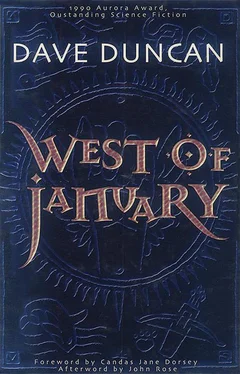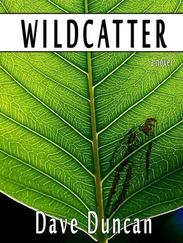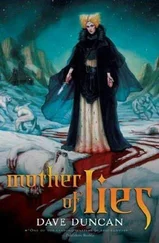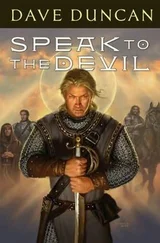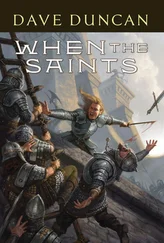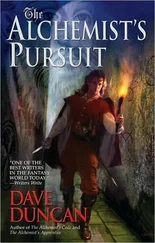Whatever dread destiny the traders had in mind for me—and I felt certain that Hrarrh knew exactly what it was, so dread was likely an optimistic outlook—I could see no chance of escape until my knees healed. Always there was a driver in the cab with me, either Misi or Pula, and never was I allowed to meet a non-trader.
My obvious strategy was to try to be as pleasant and cooperative as possible: grateful, helpful, and dumb. I asked Jat for things to do, and thereafter I peeled vegetables when it was his turn or Lon’s turn to cook for the caravan. I strung beads for him, sharpened knives, cleaned tack, polished pots, kneaded dough—anything to keep my mind off its fears. But it was never enough.
“Misi? Can I help you? Will you teach me to sew?”
The wagon was crawling across a level empty plain. With nothing but low scrub to eat, the team was making unusual speed—a fair walking pace—but the flat ground presented no challenge to the drivers. One side of the wagon was shuttered against a wicked dusty wind. Misi was sitting indoors, only rarely needing to interrupt her embroidery to lean out the front window and yank on the hippos’ traces. She was a skilled seamstress, producing the finest needlework imaginable with hands that could have strangled bulls.
After a moment the big onion eyes came up to stare at me. “Men don’t sew, Knobil.”
“There’s no reason why they shouldn’t. I can’t ride or hunt. Why not sew?”
She thought awhile, then made her strange subterranean chuckle noise. “I don’t know why not.” She heaved herself to her feet and began to rummage through the chest on which she had been sitting. She eventually produced a bundle of fabrics and brought it across with her bag of equipment, settling massively at my side. The wide bed no longer seemed spacious.
She opened the bundle, spilling forth a wide selection of fabrics in many colors, some plain and some already embroidered. She selected a beige rag and handed it to me. “For practice.”
I fingered it curiously. “What cloth is this?”
“Cotton, Knobil.”
“It is so fine! Not like woollie cloth. What sort of an animal has fleece so fine?”
“Not an animal.” She scowled, as if thinking hurt her. “Cotton comes from a plant. It grows in hot swamps; there aren’t many of them just now. When I was little, cotton was cheaper. Mostly costly now.”
A long speech for her! I tried to imagine Misi as little. I wondered how one sheared a plant. “What are all these others, then?”
She began handing them over and naming them. “Linen…taffeta…burlap…felt…”
“This shirt that you are sewing—what cloth is it?”
I had been watching the shirt blossom under her touch. A plain brown garment had sprouted a forest of flowers, arabesques, and insects, in an exploding rainbow of color. It was almost complete. This was the first time I had had the chance to handle it, but I had already noticed the fineness of the material.
Pause. “Silk,” she said reluctantly.
“And what does this come from—animal or plant?”
“Don’t know!” That was a very speedy retort by her standards.
“I was told—did you trade silk to the ants?”
“Might have done.”
“Where does it some from, then?”
She waved a great hand vaguely southward. “From forests.”
I fingered the shirt again. “When the ant women dressed up for their feasts, they wore very bright gowns. The gowns seemed to be made of very light material. Would those gowns have been silk?”
Misi nodded. I waited until she said, “Likely.”
“It’s beautiful.”
She began to roll up the bundle, but I took it from her and started to go through it, comparing the different cloths. I had found something that interested Misi! For the first time we were having a conversation that was not a wrestling match.
Then I found a tiny rag of something different. It was clear and iridescent, of no color and yet of all colors, so fine as to be very nearly transparent. I held it up in surprise. “What’s this?”
Another pause, and it was a long one. “Water silk.”
“It’s beautiful! I can almost see through it! What is the difference between water silk and ordinary silk?”
“Color.”
“That’s all?”
She nodded reluctantly, her chins bulging. But I had learned to wait, and finally she said, “Plain silk is brown. Light brown. Or dark brown. Black, the most common.”
“You can’t bleach it?” A herdwoman’s son knew all about bleaching.
Misi shook her head.
“Or dye it?”
“Can dye water silk. Not ordinary silk. Very rare.”
I admired the water silk some more. “It’s expensive, I suppose?”
A nod.
“How many bales of ordinary silk for one bale of water silk?” I knew now how the traders saw the world, in comparative values.
“Fifty or more.”
Her expression suggested that I should be impressed. She was watching me intently, as if frightened that I might damage her precious fragment or run off with it.
I whistled again, thinking that would be an appropriate reaction.
But I was not very interested in silk.
─♦─
Male traders scout, hunt, and cook. The rest of the time, if there is no trading in progress with the locals, they haggle among themselves—just to keep their tongues in practice, Jat said. Two of the four hippos belonged to him; two to his father, Lon. Both men also owned horses, and the number of those varied continually, although Jat never parted with his favorite, a high-stepping bay mare. Horses, like all two-eyed creatures, need sleep; they need water and time to graze, so the community’s horses were rarely to be found near the wagons. The men took turns at tending them, and from time to time the whole herd would go thundering by, heading for fresh grass and water somewhere up ahead.
And the wagons continued their endless crawl. Rocks and rivers, woods and cliffs—our road was never straight for very long, but I assumed that we were heading mostly westward, because more often than not our shadows lay ahead of us. As a child, I had learned that sunward was east and that shadows pointed west. Given the limited range of woollies, that rule was accurate enough for all herdfolk purposes. Now the sun was already farther from the zenith than I had ever seen it.
But then a chance remark by Jat told me I was wrong: we were heading east. He proceeded to give me a lesson in basic geography.
We had just finished a wonderful meal, I recall. The scouts had encountered a band of hunters who had slain a grotesquely tusked animal that I had never heard of. Dot called it a “yum-yum,” and I could understand why. Jat had bartered a haunch in return for a sack of cubenuts and now, proud of his prowess as both cook and breadwinner, was leaning back complacently, digesting. Dot had curled up on Misi’s ample lap and gone to sleep. Pula and Lon were missing.
The terrain was light woodland, and the animals crunched and smashed as they grazed through the thin trunks. The wagon heaved and rocked. Every time it came down hard, Misi would belch. She had eaten more than all of the rest of us put together, and her eyes were even more glazed than usual. The reins lay slack in her ample hand.
“East?” I said. “How can you tell which way is east?”
“By the curl on the trees,” Jat replied, and he twirled his mustache triumphantly. “Trees always grow toward the sun.”
Any child knew that trees curved near the ground. On the grasslands their uppermost trunks had been nearly vertical, but here the tops curled over farther. East of the sun the vegetation is older, Jat explained, and farther north or south trees twist in a spiral. This may be one reason why traders worship the sun—given a glimpse of it and a few trees, a trader can make a very near guess as to where he is on Vernier. The angels have more accurate methods, of course, but the traders get by with trees.
Читать дальше
